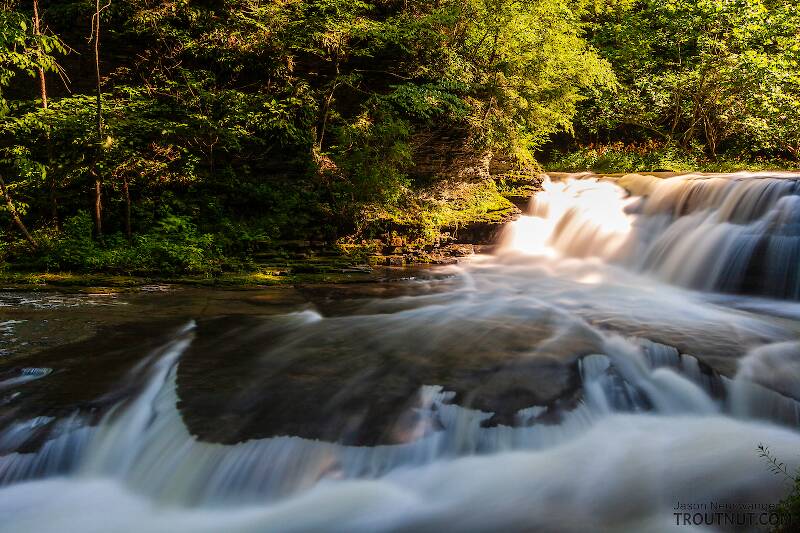
Blue-winged Olives
Baetis
Tiny Baetis mayflies are perhaps the most commonly encountered and imitated by anglers on all American trout streams due to their great abundance, widespread distribution, and trout-friendly emergence habits.


Mayfly Species Ameletus browni (Brown Duns)
Species Range
Physical description
Most physical descriptions on Troutnut are direct or slightly edited quotes from the original scientific sources describing or updating the species, although there may be errors in copying them to this website. Such descriptions aren't always definitive, because species often turn out to be more variable than the original describers observed. In some cases, only a single specimen was described! However, they are useful starting points.
Male Spinner
Wing length: 8 mm
A small clear-winged species; wings with a faint amber tinge, especially in the basal costal area.
Head and thorax deep mahogany brown. Median line of mesonotum broadly light yellowish brown; some oblique pale areas extend forward and downward from the wing roots and around the bases of the legs. Legs yellowish; femora tinged with ruddy brown; fore femur considerably darker than the others. Wings hyaline; a very faint amber tinge, most evident in the basal costal area; veins and cross veins fine, brown; cross veins in basal costal space indistinct. Abdominal tergites rather deep yellow; posterior margin of each tergite narrowly brown, and poorly defined brownish triangles extending forward from the end of each dark band above the pleural fold, their apices almost reaching the anterior margin. Sternites slightly paler yellow, shaded faintly with ruddy brown along the lateral margin; sternites 1-7 each with an oval brown ganglionic spot. Forceps and tails faintly smoky; tails with narrow dark joinings. Penes as in fig. 118.
Nymph
Nymph light sepia brown, the head and thorax with pale streaks and lunate markings. Abdominal tergites marked with a wide pale median band, white submedian and antero-lateral dots and lateral oblique streaks; sternites pale brown, with traces of a whitish mid-ventral line, submedian dark streaks and a dark dot in the antero-lateral angle of each. Legs pale, with brownish black bands; gills rather small, oval, whitish, the edge darker, tracheation not visible. Tails blackish in the basal three-fourths, white beyond this, with a narrow dark tip. This species, allied to A. dissitus and A. cooki, is distinguished from each of these by the finer details of the penes structure.
Start a Discussion of Ameletus browni
References
- Needham, James G., Jay R. Traver, and Yin-Chi Hsu. 1935. The Biology of Mayflies. Comstock Publishing Company, Inc.
Mayfly Species Ameletus browni (Brown Duns)
Species Range
Common Name
Resources
- NatureServe
- Integrated Taxonomic Information System
- Global Biodiversity Information Facility
- Described by McDunnough (1933)

